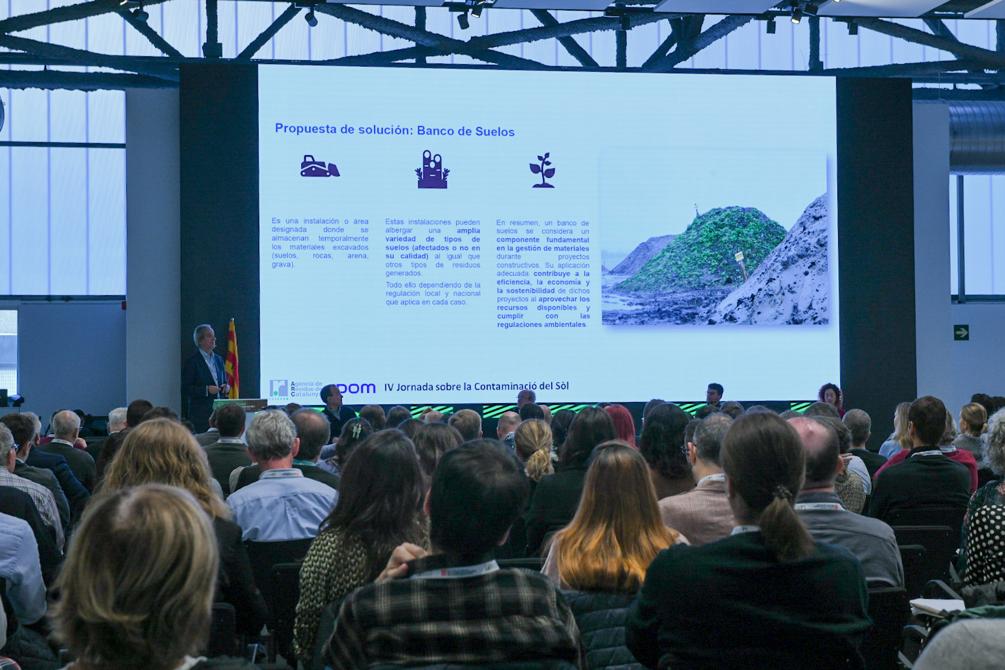Soil circularity: soil banks, passports, and certificates
One of the problems of excavated soils and their management is the lack of temporary space and treatment centers to reuse or valorize the resource, in projects where time is one of the most important variables, together with the differences in volumes and the difference in location between the works. One of the solutions to this problem is “soil banks”. Germán Monge spoke about this concept and its legal framework during his presentation at the IV Jornades sobre la contaminació del sòl, organized by the Agència de Residus de Catalunya on November 20 and 21.
What are soil banks?
They are public-private facilities for intermediate storage and quality control of aggregates, soils and other secondary raw materials.
Once excavated soil is received, it is sorted and unwanted materials, such as debris, large stones or contaminants, are separated out, helping to ensure that the material is suitable for further use.
One of the key objectives of an excavated soil bank is to promote the reuse of this material. Excavated soil that meets quality standards can be redistributed for use in other construction projects, landscaping, land filling or any other application requiring soil. In other cases, specific treatments can be performed to improve soil quality or remove contaminants prior to reuse.
Therefore, excavated soil banks help reduce the need to extract more virgin soil, which saves natural resources and reduces the amount of construction waste sent to landfills.
Ultimately, soil banks provide a comprehensive approach to the efficient management, remediation, and reuse of mined land in construction and development projects. This promotes more sustainable management of soil resources, reduces the need for landfill and contributes to the economic and environmental development of the region.
Legal framework for soil reuse
Excavated soil is the largest source of waste in the EU. is not contaminated and could be safely re-used. Several measures can improve the safe reuse of healthy soil.
On the one hand, soil passports are envisaged to monitor flows along the entire value chain, with traceability and quality control from the excavation site to the recipient, with the aim of keeping contaminated soil separate from clean soil. It should be noted that excavated soil should preferably be reused on site, given the environmental costs of soil transport and the risk of ex situ mixing of excavated soil by fraudulent operators. In addition, a comprehensive traceability system and regular controls should be put in place. On the other hand, some Member States are developing soil health certificates, which guarantee the suitability of a soil for its current or intended use, based on soil quality tests carried out by an accredited body.
In summary, soil banks provide an effective and sustainable response to the problem of high excavated soil generation and low reuse rates. Their implementation can help mitigate the challenges associated with the generation and disposal of this waste, while supporting sustainable development goals and resource efficiency in the region. Soil passports and certificates are necessary and useful soil management tools to ensure soil circularity with guarantees for human health and ecosystems.
At IDOM, we continue to work on developing new solutions for sustainable soil management, providing support to key stakeholders in the sector in developing an updated, complete, and robust regulatory framework.
More about soil health legislation:
Position paper: The EEB position paper on the Soil Health Law








